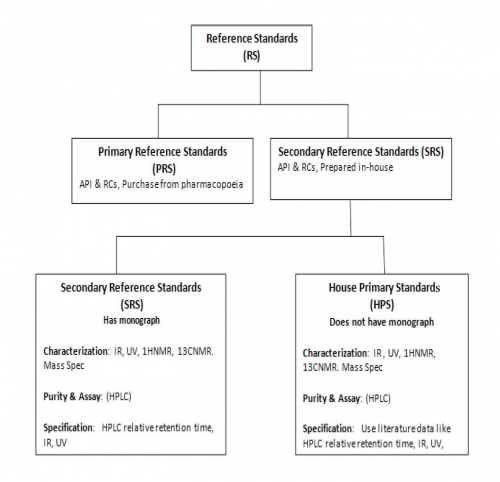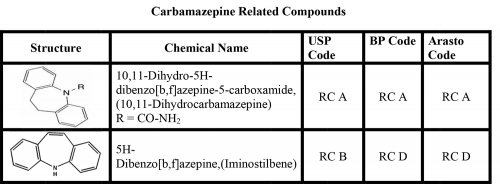توضیحات
Description
(USP 44)
- Drug Substance General Information (ICH 3.2.S.1)
1.1. Nomenclature (ICH 3.2.S.1.1)
International non-proprietary name: Carbamazepine (brand name: Tegretol, Carbatrol, Equetro, Lamictal, Felbatol)
Compendial name: Carbamazepine
Chemical name: 5H-Dibenz [b, f] azepine-5-carboxamide, 5-Carbamoyl-5H-dibenz [b,f] azepine
Arasto’s code: CAM
CAS Registry Number: [298-46-4]
- Drug Substance General Information (ICH 3.2.S.1)
1.2. Structure (ICH 3.2.S.1.2)

Empirical formula: C15H12N2O
Molecular Weight: 236.26
- Drug Substance General Information (ICH 3.2.S.1)
1.3. General Properties (ICH 3.2.S.1.3)
Carbamazepine is a white to off-white crystalline substance. It is administered orally for the treatment of the pain associated with trigeminal neuralgia and glossopharyngeal neuralgia. Carbamazepine is practically insoluble in water but dissolve in polar organic solvent such as DMF, alcohols, acetone, ethyl acetate, and chloroform by gentle heating. Its log P has been reported to be 2.25 (http://www.aseanenvironment.info/Abstract/41013736.pdf). Carbamazepine is relatively inert to acid and base, requiring potassium hydroxide fusion for hydrolysis of its urea function (see Stability Studies). Its LD50 has been reported (oral rat: 1957 mg/kg; IP rat 293 mg/kg; SC rat >1500 mg/kg, http://datasheets.scbt.com/sc-202518.pdf).
The determination of purity and assay of APIs require comparison of the product with their respective Reference Standards (RS) and Related Compounds (RC or known impurities). Accordingly, ICH regulations on the purity and assay of reference standard and related compounds are clearly defined and must be followed by drug substance and drug product manufacturers.
According to ICH Q7, 11.1 there are 3 types of standards. This is summarized in the following chart and discussed in detail below.

The impurities provided in the following table represent Secondary Reference Standards (SRS) that are prepared in-house by synthesis or by isolation. Each SRS has undergone extensive characterization (IR, UV, 1HNMR, 13CNMR. Mass Spec) and determination of its purity and assay (HPLC). For specification of the SRS of those products that have a monograph, the SRS is compared with a pharmacopoeia Primary Reference Standard (UV, HPLC retention time). For specification of those products that do not have a monograph (known as House Primary Standard), we compare their UV ε or ג/max, IR major absorptions, 1HNMR d(ppm), 13CNMR d(ppm) or HPLC retention time with values reported in the chemical literature for these compounds.

- Primary and Secondary Reference Standard (ICH 3.2.S.5)
5.1. Active Pharmaceutical Ingredient
Primary Reference Standard for carbamazepine is available from United States Pharmacopoeia. We will use a Secondary Reference Standard (previously referred to as Working Standard) for direct control of all batches of carbamazepine.
As per ICH (Q7A, 11.1) and ICH (Q6A, 2.11, 3.2, 3.3) the Secondary Reference Standards, which include the API and its Related Compounds, must be examined for their proof of structure (characterization), assay and purity and specification (identification by comparison). Furthermore, ICH Guideline on the Preparation of Common Technical Document (Q4M) requires that the data obtained from characterization, assay and purity and specification must be included in section 3.2.S.3.2 for Related Compounds (already discussed in that section) and section 3.2.S.5 of the DMF for the API. To this end, the Secondary Reference Standards of the API carbamazepine has undergone extensive characterization (UV, IR, 1 H NMR, 13C NMR, and Mass Spec) to assure its structure, assay and purity (HPLC and/or titration) and specification (comparison of its HPLC retention time and UV ג/max with USP Primary Reference Standard.
The Secondary Reference Standard for carbamazepine was produced from a released batch of carbamazepine by subjecting it to an additional crystallization from the final solvent system used in the production of the API to avoid the possibility of other polymorph formation.
SPECIFICATION OF ANALYSIS
| Product: Carbamazepine | CAS No.: 298-46-4 | Spec. No.: APC-QC-SPEC-374-00 | ||
| Issue Date: Apr, 2023 | Valid up to: Apr, 2024 | Reference: USP44 | ||
| Tests | Specifications | |||
| Description | White to off-white powder. | |||
| Solubility | Soluble in alcohol and in acetone, practically insoluble in water. | |||
| X-ray diffraction | The X-ray diffraction pattern conforms to that of USP Carbamazepine RS, similarly determined. | |||
| Identification | A: Infrared Spectroscopy B: the retention time of the major peak of the Sample solution corresponds to that of the Standard solution, as obtained in the assay. | |||
| Acidity | NMT 1.0 ml of 0.01N sodium hydroxide VS is required for each 1.0 g of Carbamazepine. | |||
| Alkalinity | NMT 1.0 ml of 0.01N hydrochloric acid VS is required for each 1.0 g of Carbamazepine. | |||
| Loss on drying | NMT 0.5% | |||
| Residue on ignition | NMT 0.1% | |||
| Chloride | NMT 0.014%; the Sample solution contains no more chloride than corresponds to 0.10 mL of 0.020 N hydrochloric acid. | |||
| Residual Solvents | Methanol: NMT 3000 ppm (Class II) Toluene: NMT 890 ppm (Class II) | |||
| Organic Impurities (HPLC) | Carbamazepine related compound A: NMT 0.2% Carbamazepine related compound B: NMT 0.2% Any individual impurity: NMT 0.2% Total impurities: NMT 0.5% | |||
| Assay (HPLC) | 98.0% to 102.0% (on the dried basis) | |||
| Prepared by: M. Shahbazi, B.Sc.Chem. | Checked by: A. Forghani, B.Sc.Chem. | |||
| Approved by: F. Javadizadeh, M.Sc.Chem. | ||||
| Storage: Preserve in tight containers. | ||||




